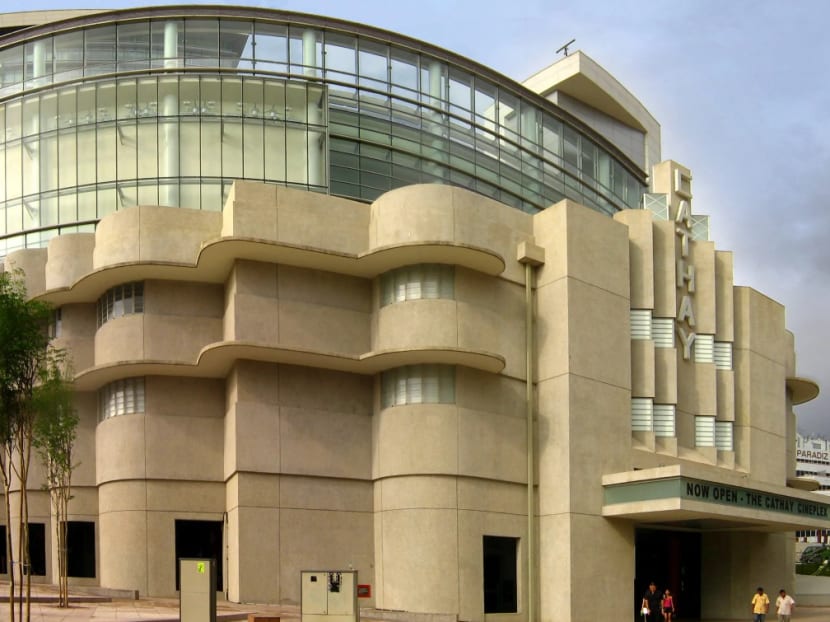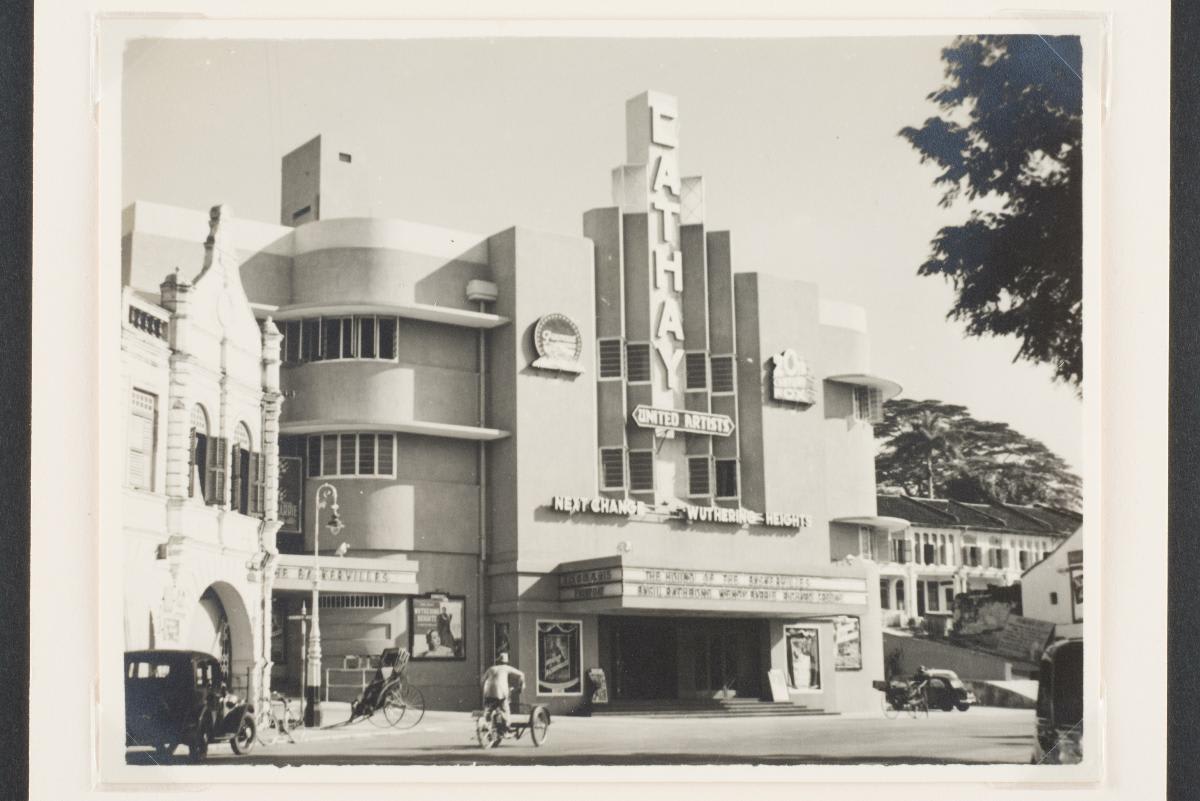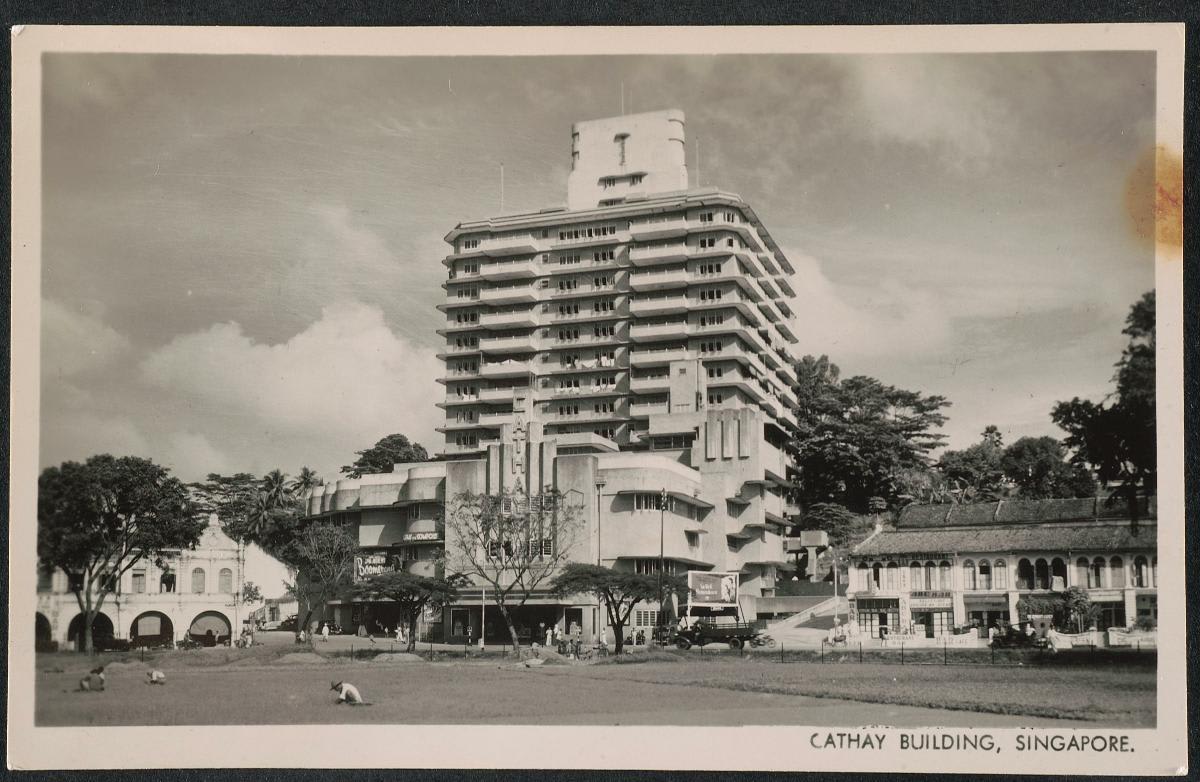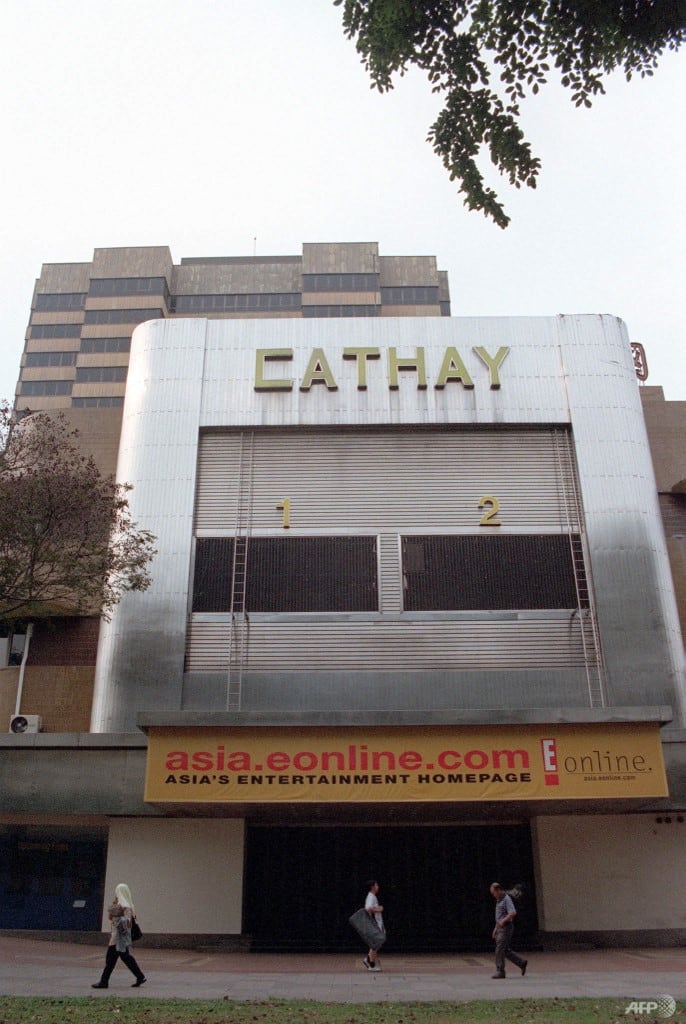5 things you may not know about the Cathay Building

The Cathay building at Handy Road, December 2006. (Photo: Wikimedia Commons/Calvin Teo)
SINGAPORE: Situated in one of the oldest cinema buildings in Singapore, The Cathay Cineplex will make its final curtain call on Jun 26.
Upon hearing the news, many Singaporeans have taken to social media to reminisce stories of the iconic Cathay Building on Handy Road, where the cineplex is located.
It seems the storied building has witnessed a great deal, with some recalling its use by both the British and Japanese during World War II and others remembering fondly their first dates at the cinema.
Here are five things you may not know about the Cathay Building:
IT'S A NATIONAL MONUMENT
The Cathay Building - now known as The Cathay - was gazetted as a national monument in 2003.
Sitting on the slope of Mount Sophia, only the art deco facade of the building has been preserved while the rest of it has since been redeveloped.
The building, which opened in 1939, was designed by architect Frank W Brewer in the art deco style, which was popular in Singapore in the early 20th century.
Distinct features of the building include the geometric forms and patterns seen in the rounded and stepped walls. Another prominent and iconic symbol of the building is the large vertical signage that spells Cathay.
The building cost S$1 million to build.

SINGAPORE'S FIRST "SKYSCRAPER"
At more than 80m tall, the Cathay Building was Singapore's first "skyscraper".
The building was the tallest in then-Malaya when its main tower, 16 storeys high, was completed in 1941.
It was commissioned and owned by Loke Cheng Kim, a successful businesswoman and philanthropist, and her son Loke Wan Tho.
The cinema arm of the Loke business was set up as Associated Theatres in 1935, the predecessor of Cathay Organisation.
On Oct 3, 1939, the 1,300-seat cinema opened with the premiere of The Four Feathers, a film that was originally banned in Singapore.
The first moviegoers to the cinema were greeted with plush armchairs and box seats for distinguished guests.
The Cathay Building was also the first airconditioned public space and cinema in the country.

IT WAS USED BY THE BRITISH DURING WWII
Although the Cathay Building was built as an entertainment location, it served a much darker purpose during the war.
When WWII broke out in Europe in 1939 - the same year the building opened its doors - films were shown at the cinema to raise funds for the British war effort.
The British later took over the entire Cathay Building as the war closed in on Singapore.
Besides the cinema, the main building also housed branches of the British administration, including the Malayan Broadcasting Corporation, Far Eastern Bureau of the Ministry of Economic Warfare, and Ministry of Information.
A top-secret radar system was installed in the building to coordinate radar traffic from various air bases in Singapore.
The Cathay Building - then one of the sturdiest buildings in Singapore - was also used as a shelter for civilians when the Japanese air raids began.
THE JAPANESE ALSO USED IT DURING THE WAR
It has been estimated that the cinema was hit by at least 14 shells in February 1942, with one striking on Feb 15 after noon. That evening, the British surrendered to the Japanese.
As a mark of the surrender, the British were instructed to fly a white flag and a Japanese flag atop the building for 10 minutes.
During the occupation of Singapore from 1942 to 1945, the Japanese Military Administration set up their broadcast station and propaganda office within the Cathay Building.
It was renamed Daitoa Gekijo, or Greater East Asian Theatre, and became a cinema for Japanese movies and pro-Japanese propaganda films.
Outside the building, the Japanese military would occasionally display the severed heads of looters and other criminals as a warning.

A POPULAR HOTEL
After the war, the Cathay Building became the headquarters and office of Supreme Allied Commander of Southeast Asia Lord Louis Mountbatten, who had accepted Japan's surrender in 1945.
Other occupants in the building included the Far Eastern Disposal Board, British Malaya Broadcasting Corporation, the Navy Intelligence Branch and the American Club.
The building was later returned to the Cathay Organisation, which was owned by the Loke family. It was then converted into a 170-room hotel, restaurant and cinema.
The hotel closed down in 1970, and part of it was converted into offices four years later.
In its heyday, the hotel was one of the most popular meeting places for celebrities, tourists and residents.
In 1971, the five-storey Cathay Apartments was completed.





